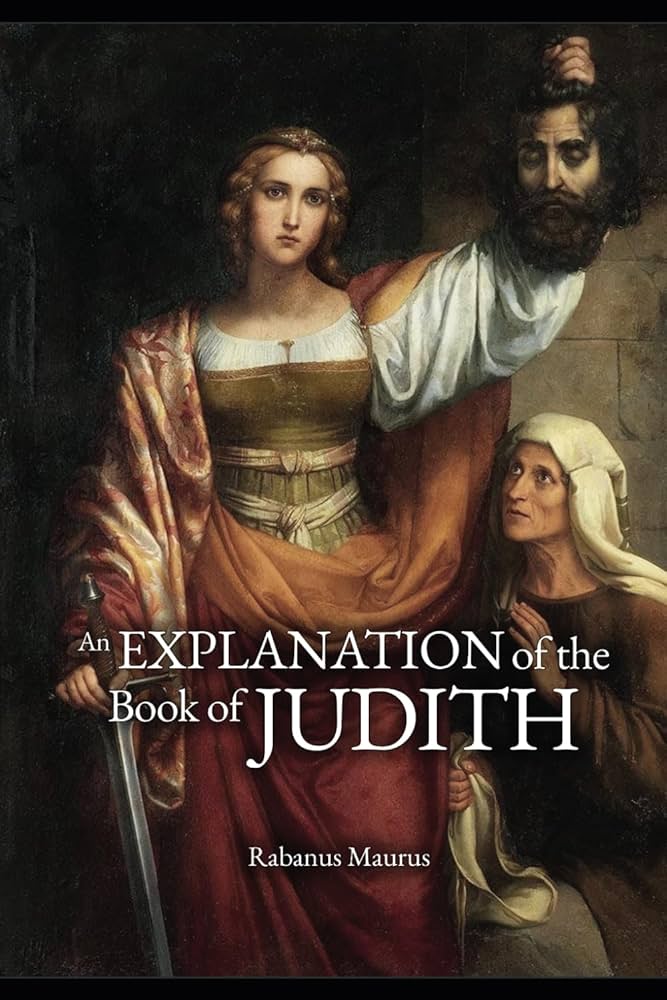The Book of Judith: A Deep Dive into the Apocryphal Text

The Book of Judith, a captivating and controversial text, occupies a unique space within biblical literature. Its inclusion in some biblical canons but exclusion from others has fueled centuries of debate regarding its historical accuracy, literary genre, and theological significance. This in-depth exploration delves into various aspects of the Book of Judith, examining its narrative, its place within religious canons, its historical context (or lack thereof), and its enduring impact on art, literature, and culture. We will analyze the text through the lenses of different scholarly perspectives and explore its continuing relevance in the 21st century.

What is the Book of Judith?
The Book of Judith is an apocryphal work, meaning it’s not included in the Jewish Tanakh (Hebrew Bible) or the Protestant Old Testament. However, it’s considered deuterocanonical, meaning it’s accepted as canonical scripture by the Catholic, Eastern Orthodox, Oriental Orthodox, and Church of the East. The narrative centers on Judith, a beautiful and resourceful Jewish widow from the town of Bethulia. Her city is under siege by the Assyrian army under the command of General Holofernes, acting on the orders of King Nebuchadnezzar. Facing imminent destruction and the threat of forced assimilation, the people of Bethulia are on the verge of surrender. Judith, however, takes matters into her own hands. Through a combination of intelligence, courage, and strategic use of her beauty, she gains access to Holofernes’ tent, where she beheads him while he’s incapacitated by drink. This act of audacious defiance shatters the Assyrian army’s morale, leading to their defeat and the salvation of Bethulia and Jerusalem.

The Book of Judith’s authorship remains anonymous. Scholars generally agree that it was most likely written in Hebrew or Aramaic around 150 BCE, although the oldest extant versions are Greek translations found within the Septuagint. The lack of an original Hebrew manuscript and the presence of several historical anachronisms have led many modern scholars to view the text as historical fiction, or perhaps a parable intended to convey specific theological messages.

Who Was Judith in the Bible?
Judith’s role transcends that of a typical biblical heroine. While possessing undeniable beauty, she’s far from a passive figure. Her beauty is a tool, a weapon skillfully employed in her strategic plan. Unlike many other female figures in the Bible who are defined by their family roles, Judith is autonomous and proactive. She is not defined by her marriage or lack of children but by her resolute faith and her willingness to act decisively to protect her people. She embodies strength and resilience, demonstrating an unconventional kind of heroism.
Her actions are often compared to those of other strong female figures in the Hebrew Bible, such as Deborah and Jael from the Book of Judges. Like them, she strategically utilizes her wit and cunning to overcome a seemingly insurmountable military foe. The parallel with Jael, in particular, is striking: both women lure their enemies into a false sense of security before striking the decisive blow.
The use of Judith’s beauty as a weapon is also significant. While many interpretations emphasize her piety and unwavering faith, some scholars point out the complex interplay between religious devotion and the use of her sexuality to achieve a political and military objective. This aspect of her character contributes to the enduring fascination with Judith and the ongoing interpretations of her story.
What Happens in the Book of Judith?
The narrative of the Book of Judith unfolds in two distinct parts. The first part establishes the historical setting, describing the Assyrian campaign under Nebuchadnezzar II and Holofernes’ approach to Bethulia. It highlights the desperation and impending doom facing the city and its inhabitants, who are considering surrender to avoid destruction.
The second part introduces Judith and her decisive actions. Her bold plan, her strategic seduction of Holofernes, and the culminating act of beheading the general are the climax of the narrative. The subsequent Assyrian rout and Israelite victory serve as a testament to Judith’s courage and faith, illustrating divine intervention through human agency. The final chapters emphasize Judith’s continued piety and her lasting legacy as a symbol of faith and resistance.
The narrative is rich with symbolism. The siege of Bethulia represents the spiritual struggles faced by the Israelites, while Judith’s actions symbolize faith, resilience, and the triumph of good over evil. The detailed descriptions of the Assyrian army, its weaponry, and its siege tactics add to the story’s dramatic tension, creating a vivid and memorable account.
Canonicity of the Book of Judith
The Book of Judith’s canonicity is a subject of ongoing debate among different religious traditions. It’s included in the Septuagint, the Greek translation of the Hebrew Bible, and it’s considered canonical by the Catholic and Orthodox churches. These churches view the book as a divinely inspired part of sacred scripture, highlighting its moral and spiritual value.
However, the Protestant tradition classifies the Book of Judith as apocryphal, meaning it’s not considered part of the authoritative canon but is often included in Bibles as supplementary material. Protestant scholars generally regard it as valuable for its moral teachings and literary qualities but not as directly inspired scripture in the same way as the books in the accepted canon.
Judaism, on the other hand, never included the Book of Judith in its canonical scriptures. Its exclusion from the Hebrew Bible has been attributed to various factors, including its potentially later composition date, its Greek origin (as the oldest extant versions are Greek translations), and its perceived support for the Hasmonean dynasty, which was opposed by some early rabbinical authorities.
Authenticity of the Book of Judith
The historical accuracy of the Book of Judith is widely debated. Many scholars highlight several anachronisms and inconsistencies within the text that challenge its claim to be a historically accurate account.
The identification of the “Nebuchadnezzar” in the Book of Judith is a significant point of contention. The Nebuchadnezzar of the book is an Assyrian king ruling from Nineveh, while the historical Nebuchadnezzar II was the king of the Neo-Babylonian Empire, and Nineveh had already been destroyed before his reign. This, along with other questionable details, such as the unspecified location of Bethulia, the apparently Greek-sounding name of the Assyrian general Holofernes, and Judith herself being an otherwise unrecorded figure, leads most modern scholars to treat the text as either historical fiction or an allegorical tale. The narrative’s apparent focus on themes of faith, patriotism, and resistance against oppression suggests that the author may have been inspired by events such as the Maccabean Revolt, creating a fictional story that resonated with the experiences and concerns of contemporary Jewish communities.
Lesson Summary: The Book of Judith - Story, Canonicity, and Authenticity
The Book of Judith narrates the story of Judith, a courageous Jewish widow who single-handedly saves her besieged city, Bethulia, by assassinating the Assyrian General Holofernes. This narrative is rich in symbolism, emphasizing faith, resilience, and the triumph of good over evil. The text is highly debated in terms of its canonicity, being included in the Septuagint and recognized as canonical in the Roman Catholic and Eastern Orthodox traditions but regarded as apocryphal by Protestants and excluded from the Hebrew Bible. Its historical accuracy is also questioned due to several anachronisms and discrepancies. Modern scholarship generally views it as either a work of historical fiction or a parable, reflecting the experiences and beliefs of the period, possibly the aftermath of the Maccabean Revolt. Nonetheless, the Book of Judith remains a captivating and enduring story, influencing religious thought, artistic representations, and literary interpretations for centuries.
Frequently Asked Questions
What does Judith mean?
Judith means “Jewish woman” in Hebrew.
Is the Book of Judith based on a true story?
The Book of Judith contains numerous historical inaccuracies, leading most scholars to believe it’s a fictional story or parable rather than a strictly historical account.
What is the main message of the Book of Judith?
The Book of Judith conveys messages of faith, courage, and the unexpected triumph of the underdog. It inspires believers to stand against oppression and trust in God’s providence, even in seemingly impossible situations.
What is the Book of Judith about?
The Book of Judith tells the story of Judith, a widow who, through cunning and faith, saves her city from an Assyrian siege by assassinating their general, Holofernes.
Who wrote the Book of Judith?
The author of the Book of Judith is unknown. It’s believed to have been written around 150 BCE, likely in Hebrew or Aramaic, and later translated into Greek and other ancient languages.
This comprehensive exploration of the Book of Judith provides a balanced overview of the complexities surrounding this fascinating biblical text. By examining its narrative, its position within various religious canons, and the ongoing scholarly debates regarding its authenticity, we gain a deeper appreciation for its lasting cultural and theological significance. Further research through resources like Lbibinders.org can provide additional insight into the various interpretations and analyses of this compelling story.